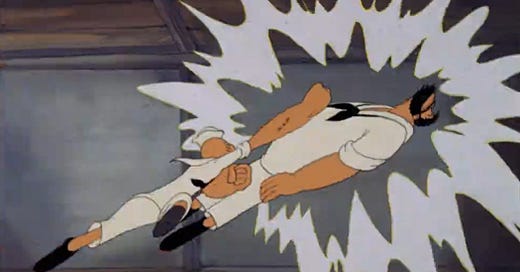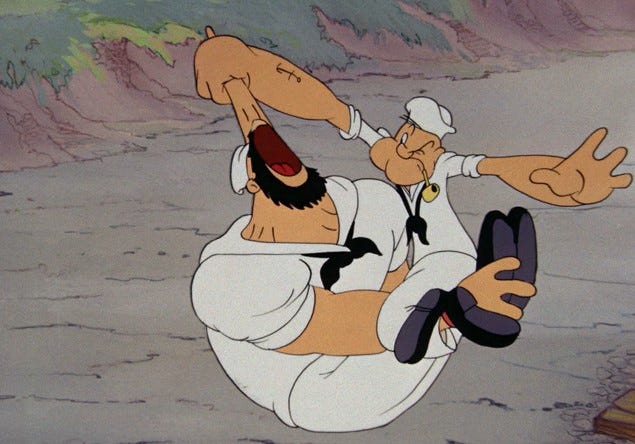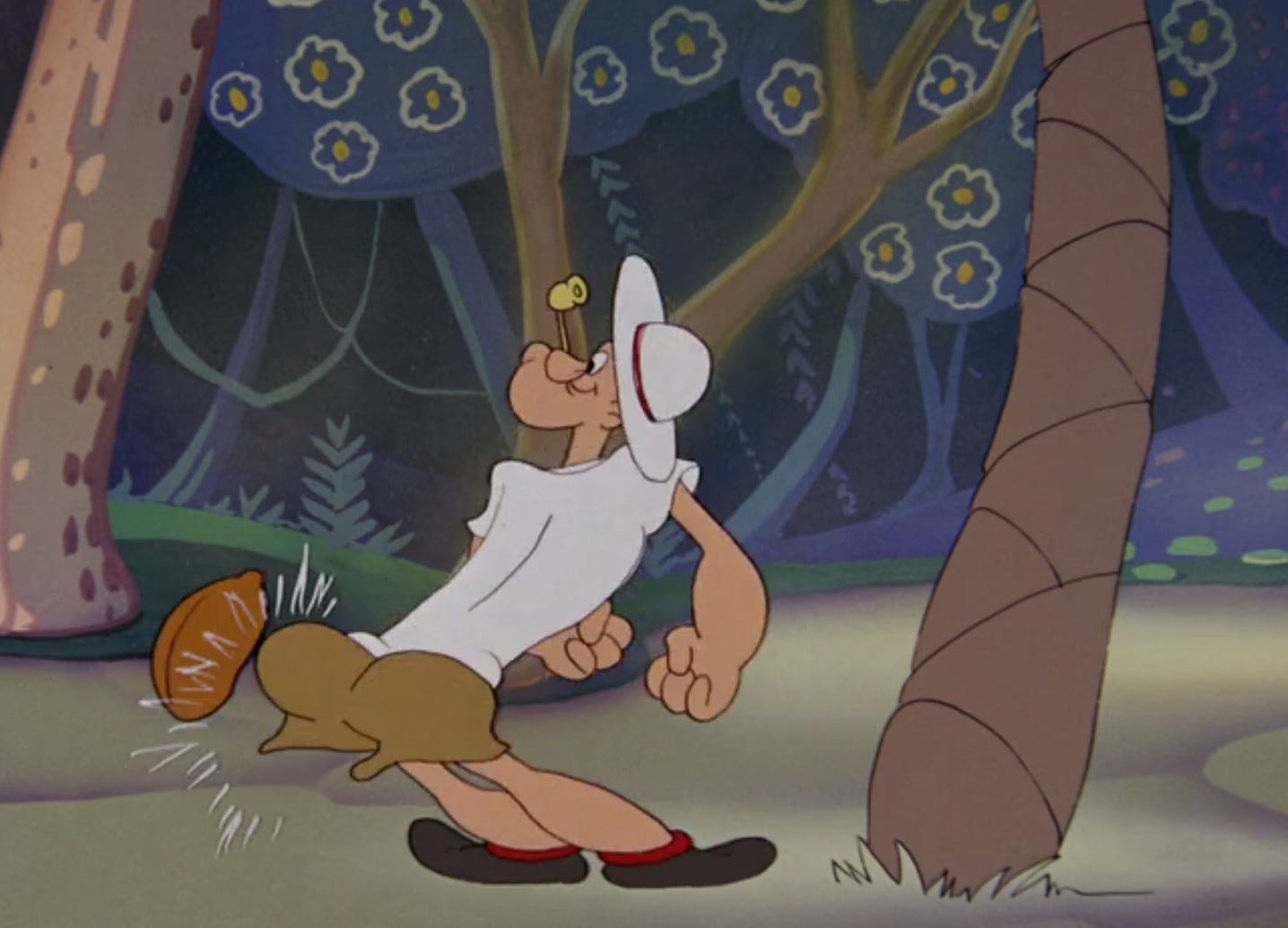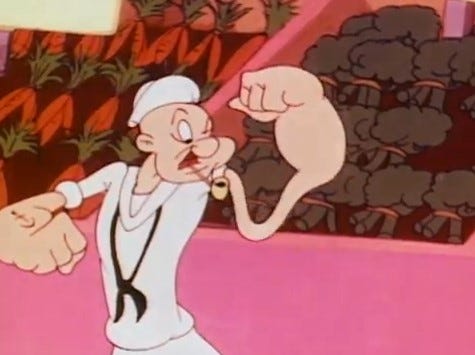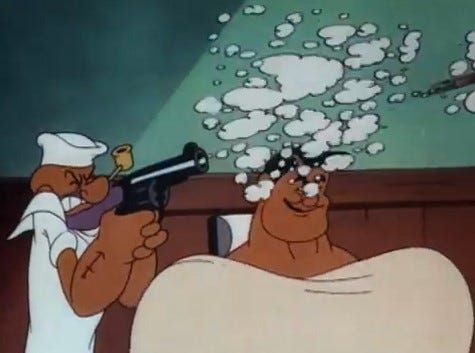Gentilella began his animation career in the late 1930s at Terrytoons.
Some films he worked on at Paul Terry’s studio include Chris Columbo (1938) and Frankenstein’s Cat (1942).
The dynamism in his animation stood out among the more tamed animators at Terrytoons.
He joined Famous Studios in 1944, the year when he also received his first on-screen credit for the Little Lulu short Lulu Gets the Birdie.
Gent’s first Popeye cartoon was The Anvil Chorus Girl (de-facto directed by Dave Tendlar.)
He flip-flopped between animating for Tendlar’s and Jim Tyer’s units in the mid-1940s, but he eventually settled into Tom Johnson’s unit in 1947.
Until Famous Studios stopped releasing theatrical Popeyes in 1957, Gent stayed with Johnson and his team.
(The Anvil Chorus Girl, 1944)
(Rodeo Romeo, 1946)
Gent’s animation is very fluid and rubbery.
According to animator Bob Jaques, Gent animated “as a jazz musician plays music — with feeling, style, and flair.”
Gent drew with raw power, and many poses in his scenes possess strong, clear contours.
When identifying a Gentilella scene, look for long, expressive mouths, crossed eyes, and a super-pronounced butt chin on the trademarked sailor.
Fast-paced action is prevalent in his work, and he even adapted Tyer’s “pop frames” into later Popeye cartoons.
For instance, in A Balmy Swami (1949), when Popeye is punching the girders, he disappears for a frame before continuing.
To sum up, Gentilella proved to be one of the last glimmers of liquid-like, Fleischer-esque animation in the Famous cartoons, which were becoming more rigid as the years rolled by.
(For Better or Nurse, 1947)
(Safari So Good, 1947)
(How Green is My Spinach, 1950)
(Shaving Muggs, 1953)

